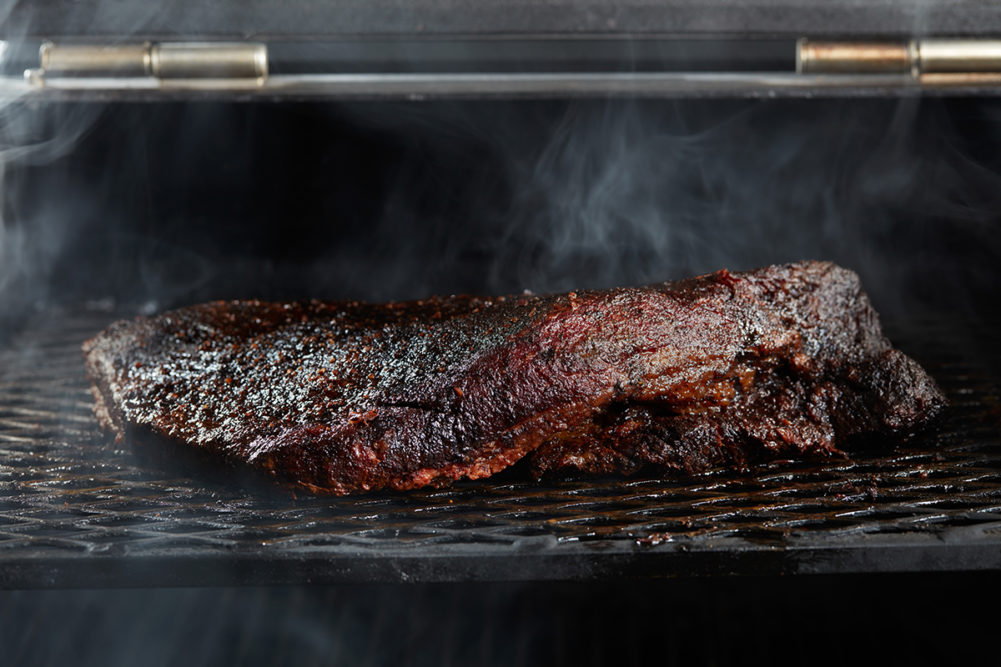The current economic environment is having a huge impact on trends in beef sales, said Sanin Mirvic, president and CEO of American Farmers Network (AFN), which ships 100% grass-fed, all-natural and all-organic beef.
“As much as consumers want certain quality and cuts, they have to cut back when the financial market fluctuates,” Mirvic said. “They may lean more toward grinds, hamburgers, hot dogs, sausages and other products that are more affordable.”
When things are going well financially, consumers buy more middle cuts, like steaks, he said. The pandemic has encouraged more people to cook some of the nicer cuts at home. As a result, AFN has seen the size and variety of cuts available in case-ready formats increase.
Although inflation continues to impact consumer buying habits, beef is a summer staple, and the customers of Arkansas City, Kan.-based Creekstone Farms remain deeply committed to keeping beef at the center of their plates, said Jim Rogers, the company’s senior vice president of sales.
Additionally, as inflation continues to cut into and reduce customer’s foodservice outings, shoppers are continuing to seek out ways to recreate “high end” restaurant experiences at home, Rogers said.
Also, there are signs that the worst of the inflationary pressures are over. Prices overall are stabilizing, and beef prices, Rogers said, are on the decline.
And regardless of price, Creekstone and other higher-end brands continue to do well.
“We offer a premium product at a higher price point, but we’re confident that our retail customers recognize that Creekstone Farms is a brand they know and trust to provide an excellent dining experience, whether the product is cooked at home or in a restaurant,” he said. “Inflationary times or not, our customers know that our products offer unparalleled value and quality.”
Beef is still the largest category in the fresh meat department, with an estimated $30.6 billion in sales in 2022. Central to keeping the category strong, Rogers said, is giving customers and consumers plenty of options.
“Customers expect a variety of offerings when it comes to animal proteins. To meet demand, Creekstone Farms has a variety of programs – Premium, Natural, Master Chef. There’s something for everyone.”
Top sellers
AFN’s current list of top sellers at retail includes 85/15 ground beef, 93% ground beef, ribeyes, tenderloins, top sirloins and New York strips.
Those cuts make up about 80% of all sales in AFN’s roster of 20 to 22 products, which are sold in about 7,000 retail stores, Mirvic said.
AFN sources angus beef only, which he said helps make it stand out in the retail grass-fed beef category.
“There is never any dairy influence and that plays to the quality of our product. Our taste is familiar to consumers who are switching from conventional beef to 100% grass-fed beef, which makes it more approachable and seamless for those who want to choose better products for their health and wellness.”
Mirvic said AFN doesn’t know of any shippers at the same scale as AFN that can back up a Non-GMO Project Verified claim and Certified Humane claim across their entire program.
“We’ve been around for more than 20 years, which makes us the oldest in the natural and organic beef category. When we started, the organic category was barely defined, so we paved the way for the category to become what it is today.”
Over that time period, he added, AFN has been able to scale and adapt to what its customers need.
AFN also takes pride in its efficient vertical integration model, which makes its products more affordable not only to retail buyers, but to the end consumer, Mirvic said.
“We want to get on the plates of more consumers and don’t want price to be a barrier.”
AFN boasts a 98.2% accurate and on time delivery record. The company doesn’t’ take on any business it can’t fulfill with a high degree of confidence, Mirvic said, which its retail partners love.
“They don’t ever have to worry that a delivery won’t arrive on time. Instead, they can focus on servicing their customers.”
Summer is a popular time for premium cuts such as the t-bone and porterhouse steaks and tenderloins (filet mignon), Rogers said.
“Sales of these cuts are typically concentrated around two specific times of year: the third week of June and the third week of August,” he said.
In addition to those mainstays, Rogers said there are a few cuts of beef trending up this year compared to 2022, including brisket, flank steaks, fajita cuts and skirt steaks, which have all seen healthy increases in dollar sales and pounds sold.
“Consumers may be looking to stretch their protein budgets moving into summer grilling season, and these cuts typically have lower price per pound averages when compared to other beef cuts,” Rogers said. “And most of them can be used in many different types of cuisines, thus making them appealing from both a versatility standpoint for the consumer, and a marketing POV for the retailer.”
Consumers are still eating out less and grilling at home more than ever, he added. And consumers who are dining out less are looking to recreate upscale restaurant experiences at home – that includes experimenting with different cuts of meat, such as the variety offered by producers like Creekstone.
Owing in part to its “menu mention” program, Creekstone has extensive brand recognition among consumers – and that brand recognition is a great selling point for consumers trying to recreate “five-star” restaurant experiences at home.

